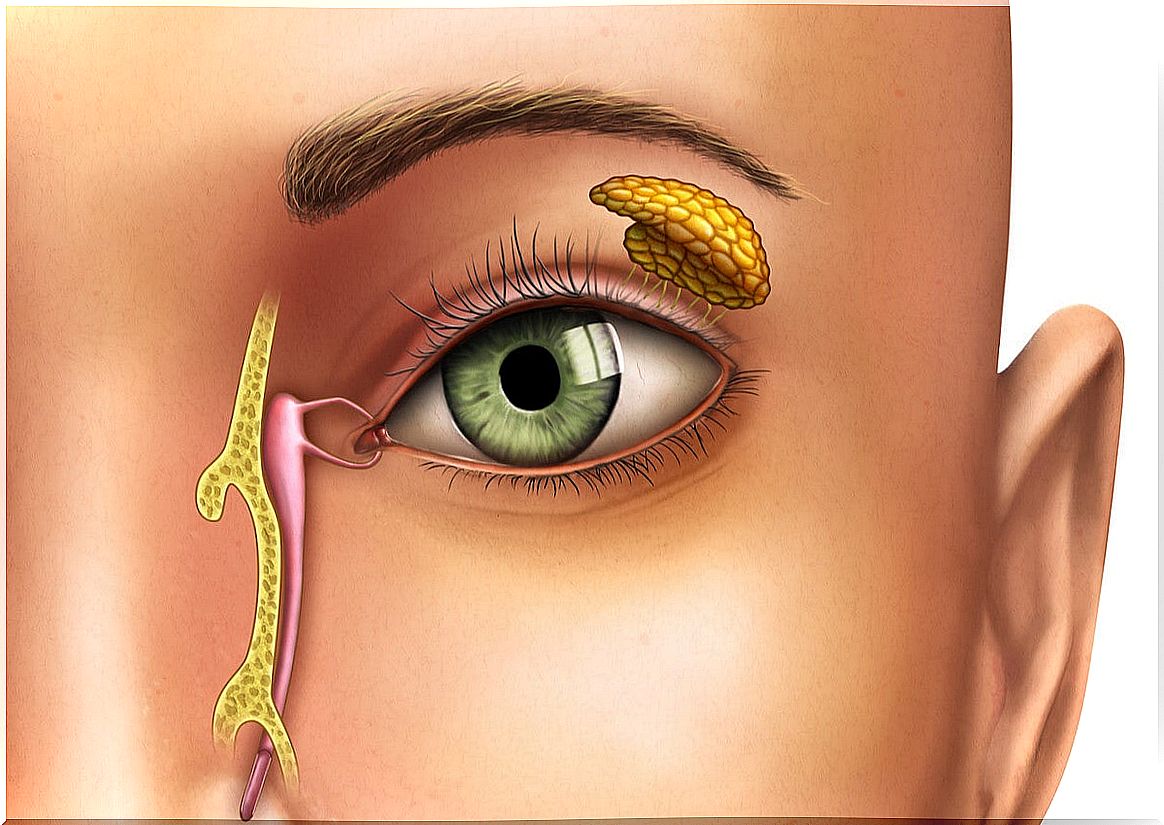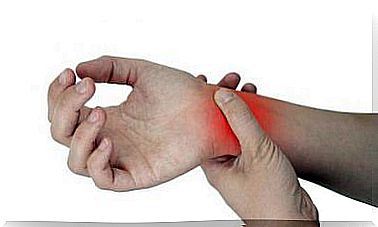How To Identify A Blocked Tear Duct?
A blocked tear duct is a relatively frequent situation that affects the circulation of the tears in the eye. Especially often it bothers newborn babies who have a congenital obstruction of the canal.
The problem is that when the drainage is disturbed, germs proliferate more easily in the eye. This is why the risk of infection increases. Hence, in many cases it is necessary to establish a treatment.
How do the tear ducts work?
Before explaining what happens when a tear duct is blocked, it is important to understand how the eye drainage system works. The tears are produced in the lacrimal glands that are in the area of the upper eyelids.
These tears are responsible for lubricating and protecting the ocular surface. The canaliculi allow tears to travel to the lacrimal sac. Once there, they descend through the ducts that are also called the nasolacrimal ducts .
These tubes allow tears to pass through the nasal bone to the back of the nose. There they are reabsorbed. This whole circuit makes it possible for the liquid to renew itself and carry away any harmful particles or microorganisms. It also intervenes in eye pressure.
Symptoms of a blocked tear duct
A blocked tear duct causes the entire drainage system to be disturbed. Tears accumulate in the eye in question and, in addition, the eye becomes irritated. As the specialists from the Mayo Clinic explain, the main symptom is excessive and constant tearing. The same can be maintained for days.
Also, vision may become blurry and the entire eye may be red and irritated. Infection often occurs due to the obstruction. That is, conjunctivitis arises.
Crusting of the eyelids and discharge of mucus or pus also usually appear. In fact, when there is a blocked tear duct, infections tend to recur or do not respond well to standard treatments.

What causes it?
The disorder can appear as a consequence of many situations. As we pointed out at the beginning, it is a relatively frequent situation in babies. In fact, according to a review article, 1 in 25 babies is born with a blocked tear duct or both.
This is called a congenital obstruction . It is because children do not have a fully developed drainage system. It can also happen because there is a small membrane of tissue blocking the duct.
As we get older, we can also run into the problem. This is explained in the MSD Manual, pointing out that another frequent cause is fractures that affect the bones in the area, such as the nasal.
Other origins of the blocked tear duct are chronic inflammatory diseases. For example, sarcoidosis and granulomatosis. The same is true for infections such as conjunctivitis due to the herpes simplex virus.
A study carried out at the Cuban Institute of Ophthalmology explains that tumors in the nose or in the lacrimal drainage system are very rare. However, although rare, they can lead to this situation. Cancer treatments, such as chemotherapy, are associated with the appearance as well.
Risk factors for having a blocked tear duct
A number of factors have been identified that increase the risk of a blocked tear duct. The first one is age. It is a situation that tends to increase its incidence as we age.
An article published in the Journal of Medical Sciences of Pinar del Río explains that this pathology is much more common in older women. The average age is 71 years. This is also related to the fact of having had any previous surgery in the area of the eyes, the nose or the nostrils.
Above all, it has been seen to be related to medications used to treat glaucoma. Therefore, people who have the disease are at greater risk. Those who undergo cancer treatments as well.
Prevention of blocked tear duct
Rather, prevention of a blocked tear duct is aimed at avoiding the complications derived from this problem. Especially infections. To achieve this, extreme hygiene is essential in everything related to the eyeballs.
First, you need to wash your hands frequently and thoroughly. Our hands are a source of infection and we tend to touch our eyes often. This gesture is also essential to avoid. Another step to follow is to avoid wearing contact lenses or to use them with great care, since they also cause infections. When applying makeup, do not share utensils, such as mascara or pencil.
Possible treatments for a blocked tear duct
Treatment of a blocked tear duct depends on each case and what is causing the problem. For example, as the American Academy of Ophthalmology explains , most babies with congenital obstruction do not require treatment.
This is because as they grow, the drainage system matures and the clog is removed. However, if this situation does not improve, it may be necessary to establish an active approach.
One of the mainstays of clogged tear duct treatment is antibiotics. They can be used by eye drops or systemically. With them eye infections are reduced or eliminated.
Another way is to use dilation and probing to try to open the blockage. It is a technique that consists of introducing a small probe through the tear duct into the duct. Once there, it expands. The balloon catheter is also used, which is somewhat similar to the previous one.

Surgery
Surgery is another treatment option for a blocked tear duct. In fact, it is the definitive treatment, although it is usually reserved for when other techniques have failed or are contraindicated.
This surgery is called a dacryocystorhinostomy . It is a procedure that allows the tear ducts to be unblocked. For the tears to drain, a new path is created for them, between the lacrimal sac and the nose. This bypasses the point of obstruction.
It can be performed using general or local anesthesia and can be external or internal (endonasal). The second is done by endoscopy. That is, a kind of tube is inserted that, at the tip, consists of a camera and different tools. This tube enters through the nostrils.
External dacryocystorhinostomy involves making an incision on the side of the nose. Through it, an attempt is made to create a new path between the lacrimal sac and the nostril. To do this, a stent is placed .
Drainage of tears is essential
What we must remember is that a blocked tear duct causes tears to accumulate in the eye and cannot circulate correctly. This manifests as constant tearing, red eyes, and repeated infections.
Although in many cases it does not require treatment, the ideal is that this condition is always studied by a doctor. In addition, it is usually necessary to use antibiotics to reduce problems. Therefore, you should always consult a specialist for any of these symptoms.









